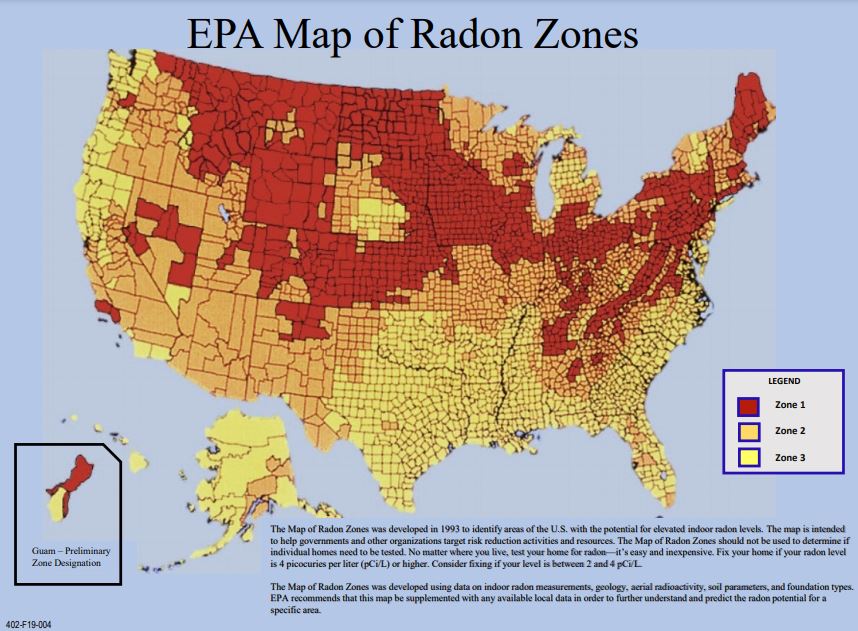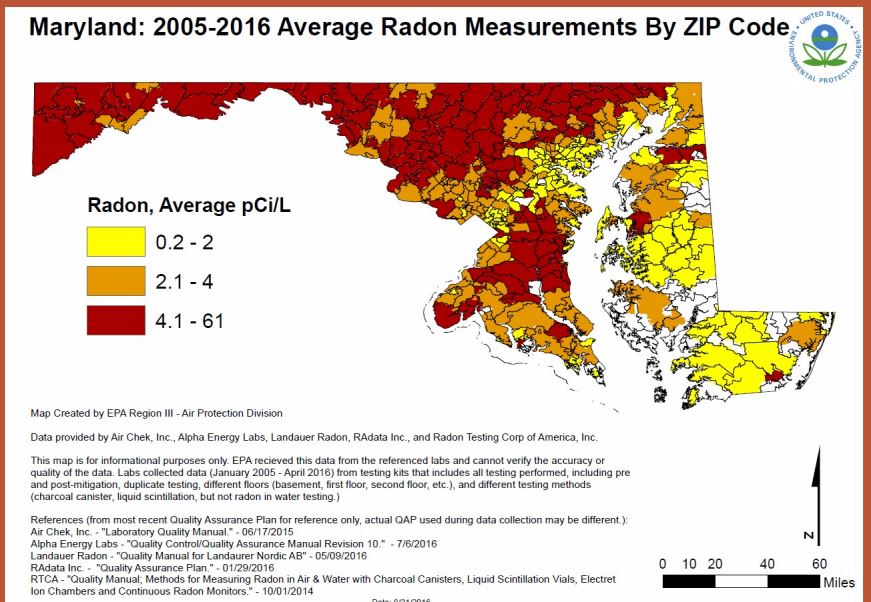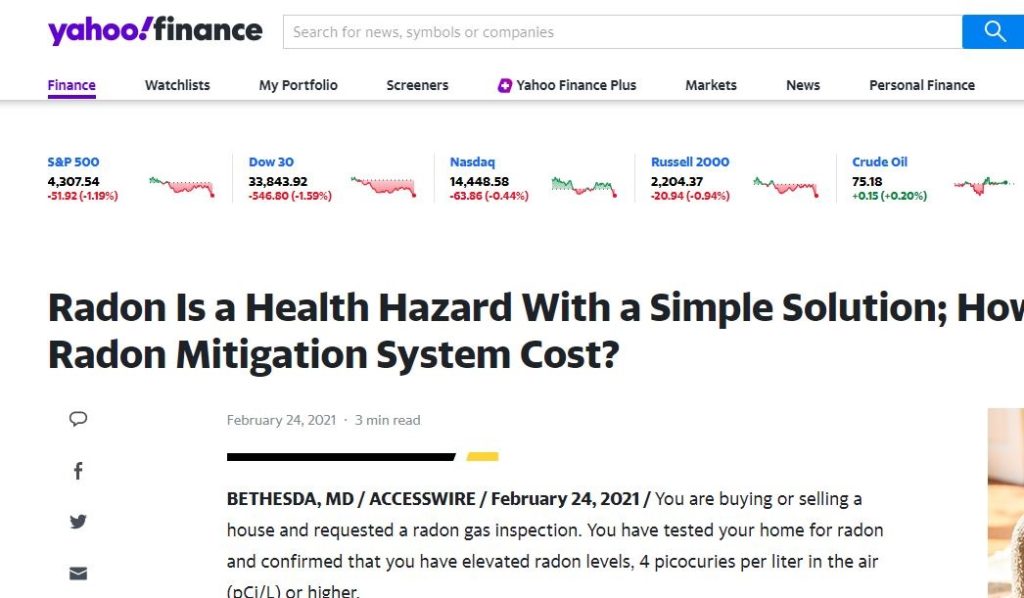What causes radon in a house ?
- Written by: Kate Holder
- Category: Radon Testing
- Published: June 1, 2022
Key Points:
• Radon is naturally occurring
• Radon is a chemically inert gas
• Radon comes from the radioactive decay of uranium 238
• Radon comes from the immediate decay of radium 226
• Much of the radon produced enters the atmosphere
• The concern with radon is when it enters a home
• Radon can enter all types of buildings, including schools and workplaces
• Radon comes from the area directly beneath building and a few meters around it, so it is very
localized
• Some of the radon that enters a home also leaves through windows and other openings to the
outdoors – the concern is when it accumulates in a home.
• Tight homes do not cause radon
• Although radon can come from man-made situations like landfills or use of radium containing
building materials, the vast majority comes from the soil

Key Points:
• Vacuums or negative pressures within a building cause radon laden soil gases to enter from the soil beneath
a home.
• Vacuums are caused by either temperature induced stack effects or mechanical exhaust systems.
• Temperature induced stack effects occur when the outdoor air is colder than indoor air. The colder
outdoor air is more dense and will move down through the soil and push ahead of it the warmer,
less dense air inside the building. As this air moves through the soil, it will pick up soil gases such
as moisture and also radon.
• Exhaust fans that take air out of a building can also draw radon laden soil gas into the structure.
• The combination of temperature induced stack effect and mechanically induced vacuums will draw radon
laden soil gas in.
• All buildings can exhibit interior negative pressures relative to the soil.
• If radon is being produced in the soil beneath the home where the negative pressures are being exerted,
radon can enter.
• Changes in these negative pressures will change the rate of radon entry, from hour-to-hour, day to day and
from season to season as a function of how the interior pressures change.
• Pressures in the soil from wind can also push radon in.
• Since radon is a single atom, it can come through the smallest of openings in the foundation.
• Since all foundations have openings, all types of foundations are susceptible to radon entry.
• All types of homes, unless totally suspended (tree-house), can have radon concerns.











